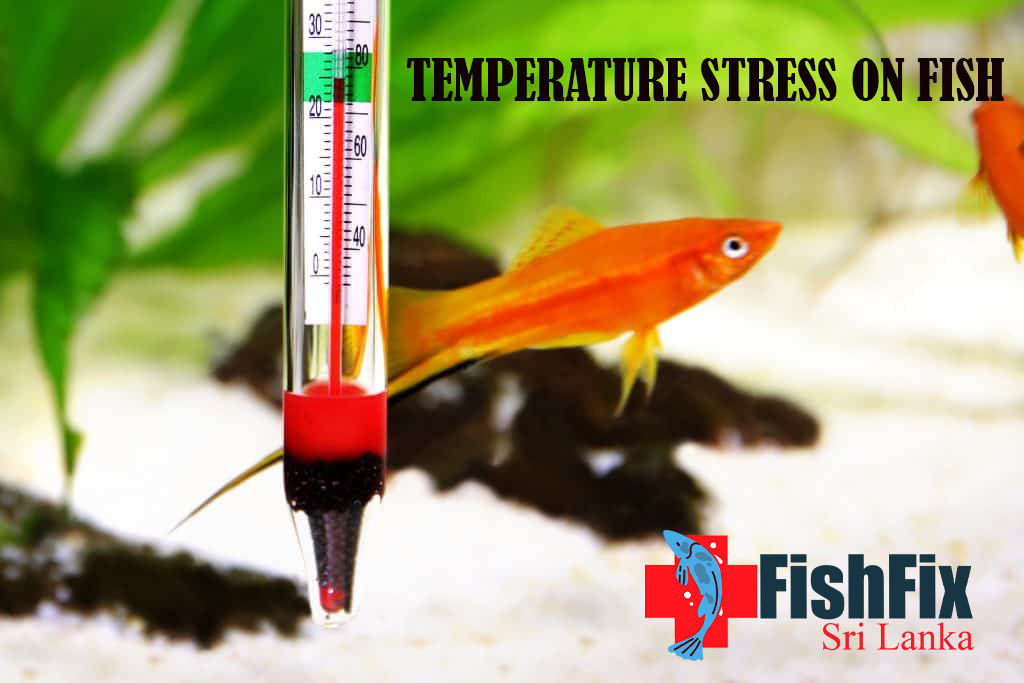- Your cart is empty
- Continue Shopping
Temperature Stress on Aquarium Fish

Definition of Temperature Stress on fish
There are standard environmental temperature (SET) ranges for individual fish species that define the temperatures for optimal growth. However, absolute temperature ranges for health or survival do not exist because temperature tolerance depends on several factors, including the temperature to which the individual has been acclimated, salinity (for estuary species), life stage, and reproductive status.
The speed of temperature change is also important. Thus, it is difficult to generalize about temperature tolerance because it is influenced by so many factors. However, it is important to be aware of the general temperature ranges for the species being examined and the conditions that may influence them. Temperate species, such as channel catfish, striped bass, and largemouth bass, often tolerate a wider temperature range than tropical fish or cold water species (e.g., salmonids). All fish are susceptible to rapid temperature changes.
Effects of Temperature on Fish Physiology
Fish are poikilothermic; therefore temperature dramatically affects their metabolism, including immunity. A decrease in water temperature suppresses the immune response. Perturbations in immune function may partly explain why many pond fish diseases are most common in the spring and fall when temperature fluctuation is greatest.
Hypothermia:
The temperature at or near the lower lethal limit of that particular species; shutdown of aquarium heater because of power failure or broken thermostat; thermometer not working properly; heater wattage too small for the aquarium; aquarium next to window or draft; shimmies; lethargy; mortality of all but the coldest - tolerant aquarium fish (e.g., goldfish and koi); water mold infection
Hyperthermia:
Temperature near the upper lethal limit of that particular species; dyspnea; heater thermostat improperly set; heater not adequately submerged or thermostat is broken; heater wattage too large for the aquarium; aquarium next to heat source or window; summer Physical Examination
Treatment and Prevention
Temperature control is feasible and routine in small, closed systems (e.g., aquaria). In general, marine reef fish are more sensitive to temperature stress than freshwater fish and marine reef tanks should have a heater of sufficient wattage to keep the aquarium at 24 ° C (75 ° F). About 3 – 10 watts/gallon is usually satisfactory.
The heater should not be more powerful than needed to maintain the temperature, because the higher the wattage, the faster the temperature will rise when the heater is turned on. If the tank has only fish, occasional excursions to the low 80s ° F are tolerated. However, invertebrates are less tolerant of hyperthermia, and if the temperature does not remain below 27 ° C (80 ° F), a chiller should be used.
In ponds or other culture systems with large volumes of water, temperature stress is usually economically unfeasible to control. Some tropical fish farmers use plastic sheeting to insulate ponds during cold snaps, but this is not practical for food fish ponds. In flow-through systems, temperature control is only feasible when either recycling most of the water or when egg incubation systems that use very little water are employed.
When fish are removed from water (e.g., netted into a hauling tank, etc.), avoid hyperthermia by doing it at a cooler time of the day and avoiding direct sunlight exposure. In winter, cold air and wind chill can cause temperature shock. It is difficult to give exact recommendations for allowable temperature change because it varies with species, environment, and prior acclimation conditions. For example, fish acclimated to a higher temperature often can withstand hyperthermia better than the same species maintained at a lower temperature.
When acclimating fish to a certain temperature, a rule of thumb is that water temperature should not be changed more than about 1 ° C (or 1 ° F) per hour. While some fish may be stressed by this change, many others tolerate even more rapid changes. For example, when transporting warm water food fish (e.g., channel catfish), it is advisable to lower the temperature to reduce stress.
Prior to hauling, the temperature can be reduced up to 5 ° C (10 ° F) every 20 minutes, unless the fish are very small. Fish that are normally exposed to wide temperature fluctuations (e.g., in ponds) are probably more tolerant of rapid temperature change than fish that are kept under more stable conditions (e.g., the thermostatically controlled temperature in an aquarium).

